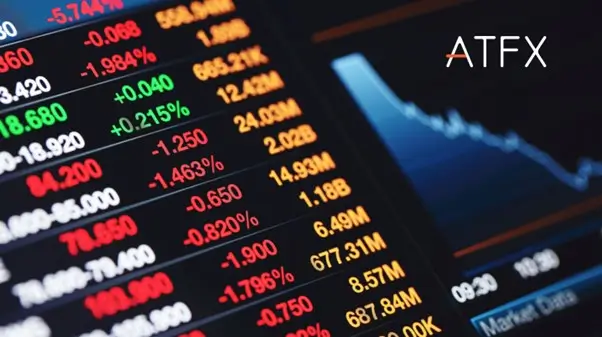Swing trading and day trading are two popular strategies traders use to profit from the financial markets. While the basic principles of these strategies remain the same, the market conditions and trading environments are constantly evolving, so it’s important to understand how they compare in the current year of 2024.
Key Takeaways:
|
What is Swing Trading?
Swing trading is a trading style that involves holding positions for several days or weeks. Swing traders aim to profit from short-term or medium-term price movements by identifying trends and using technical analysis to enter and exit trades at the most opportune times. They typically focus on less volatile assets, such as stocks and ETFs.
Advantages of swing trading:
- Lesser time commitment than day trading: Swing traders don’t have to actively monitor the market all day like day traders because they hold positions for a few days to a few weeks.
- Less stressful: Swing trading can be less stressful than day trading as traders have more time to analyze market conditions and make decisions.
- Greater returns than traditional long-term investing: Due to their ability to capture price changes over a few days to a few weeks, swing traders may make a more significant return than traditional investors.
Disadvantages of swing trading:
- Higher risk level than traditional long-term investing: Active management of positions and potential for losses can happen within a short period of a few days or a few weeks.
- Possibility for overnight market news gaps: Swing traders hold positions overnight, putting them at risk for overnight price gaps caused by market conditions or market news.
- Less trading frequency opportunities: Swing traders hold long positions than day traders. They may have fewer trading opportunities than day traders.
Overall, swing trading comes with a higher level of risk than traditional investing and the possibility of overnight market news gaps.
What is Day Trading?
Day trading, also known as Intraday trading, is a popular form of active trading style that involves opening and closing trades within the same trading day. Day traders aim to profit from short-term price movements by leveraging large positions and using technical analysis to identify short-term trading opportunities. They typically focus on high-volatility assets like forex, stocks, and cryptocurrencies.
Advantages of day trading:
- Active market monitoring all day: Day traders must actively monitor the opening and closing of the market and price movement throughout the day to succeed. Thanks to this, they can take advantage of intraday trading opportunities and capitalize on short-term price movements, which can be an advantage.
- Higher returns than swing trading: Day traders can potentially earn higher returns than swing traders due to the frequency numbers of trades and the ability to capture short-term price movements and make such gains within a short period.
- Wide range of trading opportunities: Day traders can take advantage of numerous trading opportunities throughout the day.
Disadvantages of day trading:
- High-Stress level: Because you must make quick decisions, manage risk, and deal with losses, day trading can be stressful and psychologically affect your emotions.
- Time commitment & responsibility: Day trader requires excellent time management and dedication to monitor the market activity all day.
- High-RiskLevel: Day trading comes with a high level of risk due to the potential for critical misfortunes if trades go against a trader’s position. Day traders must equip themselves with risk management in their trading strategies.
In short, day trading can be profitable with the right mindset, risk tolerance, and commitment to actively monitoring the market. Similarly, it accompanies a critical degree of chance for day traders to fail and can be sincerely burdening. Before deciding whether day trading suits you, traders should carefully consider their objectives and risk tolerance level.
Swing Trading vs Day Trading Comparison: The 8 Differences
| Swing Trading | Day Trading | |
| Holding Period | Typically several days to weeks | Typically only a few hours, or sometimes overnight |
| Strategy | Looking for medium to long-term price trends | Looking for short-term price movements. Learn more about day trading strategies. |
| Time Spent Trading | Less time spent actively trading, as trades are held for longer periods | More time spent actively trading, as trades are opened and closed within the same day |
| Analysis | Technical analysis is often used, but may also consider fundamental factors | Primarily technical analysis |
| Profit Potential | Potentially larger profits per trade, but fewer trades overall | Potentially smaller profits per trade, but more trades overall |
| Risk Management | Stop loss orders are used to limit losses | Stop loss orders are used to limit losses, but may be tighter due to short holding periods |
| Emotional Stress | Can be lower due to longer holding periods | Can be higher due to shorter holding periods and faster-moving markets |
| Suitable for | Traders who have a full-time job or other commitments | Traders who can actively monitor the markets throughout the day |
| Examples | Swing trading can be used in any market, such as stocks, forex, or commodities | Day trading is commonly used in high- volume markets, such as forex or futures |
Which Factors to Consider When Choosing the Right Trading Style for You?
Choosing between day trading and swing trading depends on your investment goals, personality, and lifestyle. Day trading requires more time, attention, and higher risk tolerance. Swing trading requires less time and can be done part-time, but still requires discipline and patience.
If you’re a beginner or have limited time, swing trading may be a better option. It’s a good way to start trading and learn the basics without needing constant monitoring. If you’re an experienced trader with a higher risk tolerance, day trading may be more profitable, but it requires more skill and attention.
| Swing Trading | Day Trading | |
| Time | Requires less time | Requires more time |
| Attention | Requires less attention | Requires more attention |
| Risk Tolerance | Lower risk tolerance required | Higher risk tolerance required |
| Trading Skill | Requires less skill | Requires more skill |
| Lifestyle | Suitable for part-time traders | May not be suitable for part-time traders |
| Profitability | Potentially less profitable | Potentially more profitable |
| Experience | Suitable for beginners or limited time | Requires more experience |
| Discipline | Requires discipline and patience | Requires more discipline |
In conclusion, swing trading and day trading are both viable strategies for trading the financial markets in 2024. Understanding their key differences can help traders make informed decisions and choose the approach that best suits their goals and preferences.
Also read how to become a trader.
Learn Better with a Demo Account
If you wish to improve your knowledge of swing trading and day trading before investing your hard-earned money, we suggest you open a demo account. ATFX offers all the major financial products on a solid trading platform to practice different strategies while still learning from a guide or the free training materials ATFX provides. So, get your demo trading account for free now !



